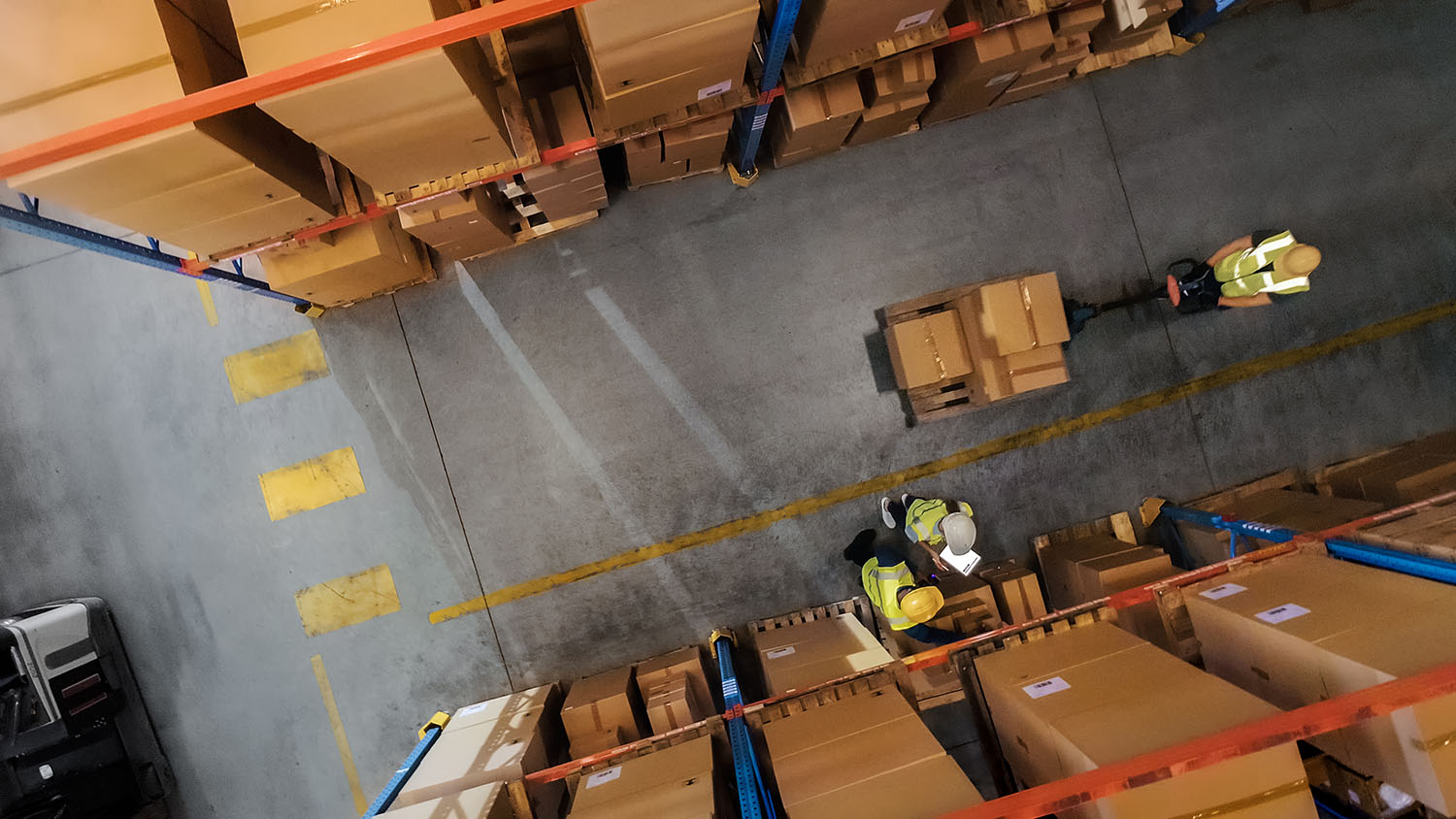Figuring out Return On Investment (ROI) is a major consideration when warehouse operators look for new technology or software. Investing money on any new business venture can be risky, regardless of the size of the company. This is even more important as we enter a time of economic uncertainty, with rising inflation and decreasing consumer confidence.
ROI is a performance measure to calculate how much financial return you will get relative to the costs you have to outlay. While ROI can be calculated by things like greater sales or profit margins, for warehouses it can also include less obvious financial benefits like reduced costs, less warehouse downtime or errors, and more potential to adapt effectively to business changes.
Given the boom of the ecommerce market during the pandemic, along with turbulent supply chains, warehouse operators looked at ways to adapt and optimize. Now with climbing economic uncertainty on the horizon, many operators may reconsider their plans to update warehouse technology infrastructure in favor of more frugal measures. However, effective warehouse management systems (WMS) can actually help to deliver greater performance and cut costs at the same time, all while allowing operators to adapt to changes in the market easier and future proofing operations.
Access This White Paper
The future of warehouse management
While the outlook may be rocky and staying in business against the growing list of competitors is an increasingly difficult prospect, without a modern WMS in place, operators will find themselves unable to keep up, reduce costs, and improve efficiencies in order to keep and retain customers.
A modern, enterprise-capable WMS is built to handle complex supply chains and the omnichannel demands from clients and customers alike. In today’s and the future outlook of warehouse management, it’s becoming clearer that a WMS is not just a capital expenditure, but it’s almost a business requirement. Implementing or upgrading to a new WMS in today’s market opens businesses up to a range of tangible and intangible benefits.
Key factors for defining your ROI
Building a business case for warehouse management software will usually center around the question of ROI. It’s no surprise that warehouse or logistics managers will need to justify a new software investment to leadership, outlining the benefits of a warehouse management system in concrete financial figures.
When looking at ROI, it helps to understand the three factors or categories that investment benefits can be broken up into, and how each can be calculated or represented. Managers that understand the multifaceted elements of ROI will be better positioned to implement the new system successfully and make full use of the suite of warehouse management system features.
These three factors will give you a greater understanding of what ROI looks like for your business.
Tangible
These benefits are the ones that can be measured easily and validated by the business. Tangible benefits can usually be used to increase productivity, increase sales, lower freight expenditure, make capital more available, and help to move companies well and truly into the digital age.
When calculating ROI, the most common tangible elements are improved order accuracy and throughput, reduced overhead costs, greater inventory accuracy, and gains in efficiency across the warehouse.
Intangible
These benefits may be just as valuable to the business, particularly in the long term, but they may be harder to validate. While it is difficult to pinpoint the specifics, they will still feel apparent across operations. This could be from greater employee satisfaction when cycle counts are automated or from automatic notifications about where a component should be on the warehouse floor.
Support
The last and hardest to define factor are benefits that support the business as a whole, both in the present and the potential for the future. While some of them may be measurable, there are a wide range of ways that a WMS “supports” operators.
This can include things like helping you meet market requirements set by partners or vendors, opening your business up to new revenue streams, or using real-time reporting features to make it easier to make decisions and comply with future regulatory demands.
Regardless of whether the ROI benefit is tangible, intangible, or supportive, there are a long list of ways that a WMS can provide ROI for operators. While not all will apply to every business case, for most warehouse operators in the American market, these are the real-world benefits of having a powerful, flexible, and comprehensive warehouse management solution.
13 ways a WMS provides ROI
1. Picking efficiency
Labor costs are one of the biggest business expenses for any warehouse operator, and the largest percentage of this will generally go towards picking. When picking processes aren’t optimized and automated, say with advanced picking methods determined by sophisticated filters and algorithms, travel time can end up going unchecked and unregulated. The more time and money it takes to fulfill an order, the less profit margins you will see.
WMS’ have smart picking logic built in that helps to determine the best pick path, allowing warehouse staff to complete order fulfillment in the most efficient way possible. These pick methods can be filtered across a number of categories including zone, carrier, or small parcel class to suit the specific requirements of your warehouse.
2. Labor efficiency
WMS’ that also offer specific labor management capabilities present even greater ROI and profitability prospects. Labor Management Systems (LMS) are an excellent way to improve the efficiency and cost effectiveness of a warehouse. By integrating an LMS as an additional module for your WMS, businesses can increase their ROI and enhance the performance of their warehouses.
An LMS helps companies to accurately measure and monitor employee production, meaning that they can identify areas of waste and inefficiency. This gives them the power to make changes to their process, such as streamlining procedures, reorganizing workspaces, and implementing new practices that increase efficiency.
Furthermore, an LMS can provide real-time data on employee performance, enabling businesses to quickly identify and address any issues that may be affecting their productivity, such as inadequate job training or a lack of necessary resources.
Find out more in our blog about improving warehouse profitability with a Labor Management System (LMS).
3. Putaway efficiency
Putaway is another labor-intensive part of warehouse management. During inventory receiving and storage in the warehouse, handling high volumes of new products and SKUs manually is incredibly time consuming. Directed putaway capabilities optimize putaway processes, assigning available storage location, directing warehouse staff to putaway in the most efficient way possible, while maintaining data accuracy.
Using directed putaway, you can configure specific putaway rules for your warehouse inventory with advanced system logic, which allows you to customize your process for inbound inventory, saving you time and money where it’s most needed.
On top of efficient putaway, you can also avoid disruptions and delays with your inventory levels and can help you optimize your warehouse layout and putaway locations.
4. Replenishment
A WMS can be an invaluable tool for directing effective replenishment in a warehouse. Replenishment allows you to maintain the correct levels of inventory at each location, ensuring that items which are frequently used or moved from one area to another are kept full and ready for use. This helps eliminate unnecessary trips to other storage areas, allowing workers to more quickly complete picking tasks.
By setting different thresholds and automatically creating work orders for replenishment tasks, a WMS can help create efficiencies within the warehouse. Every time a product is picked or moved, the system updates its inventory levels so that it knows when to issue a work order for replenishment.
5. Increased throughput
The efficiencies that WMS provide across the warehouse will directly impact throughput levels. As labor works more efficiently, supported by automated processes and centralized control, more time is available day-to-day to fulfill and ship orders.
Increasing throughput has tangible ROI benefits, increasing the speed and amount of orders leaving the warehouse, boosting your daily capacity, increasing revenue, as well as surpassing customer expectations and demands.
6. Integrations for minimizing manual data entry
Manual data entry eats away at valuable time in the warehouse. With complex systems of receiving, inventory storage, incoming orders, picking, packing, shipping, there’s a lot going on — and the potential for something to be missed.
Having a robust, Cloud-based WMS allows warehouses to integrate their other business and operational platforms, consolidating data and creating a centralized system for managing every aspect of the business.
Relying on manual warehouse management, or a system that can’t keep up with modern demands, will set you back against the competition. Data silos are a thing of the past, particularly in the age of omnichannel supply chains. Integrations allow companies to make better logistical decisions by using the right technology systems and accurate, real-time data.
7. Improved customer service
It’s not just picking processes that take up valuable time and money, administrative expenses like manually updating paperwork and handling customer billing also have a big impact on labor costs. Instead of relying on labor to do more with less, a WMS gives them the tools to work more efficiently, therefore reducing labor costs.
Using a WMS will allow you to set up billing automation, which is particularly beneficial for 3PL operators. Billing automation feeds in order and inventory data and automatically outputs accurate, real-time billing information, regardless of the number and variety of 3PL customers you have.
For 3PL’s, WMS features like customer portals also add an enhanced level of customer service. By being able to access account details and track orders, customers build peace of mind and trust with companies. While customer satisfaction can be hard to measure, it is incredibly valuable in providing profitability now and into the future.
8. Reduced transportation costs
Fuel surcharges, market forces, increased demand, and ongoing supply chain interruptions are driving the higher transport rates on the horizon. While things like gas prices are unavoidable, there are plenty of ways that operators can reduce transportation costs.
WMS with an integrated transportation management system will allow operators to have full visibility across their fleet, from driver allocation, transportation routes, and delivery schedules. For warehouses that manage their own distribution fleets, reducing costs is significant. Route management in particular can give warehouse operators great cost savings, optimizing delivery routes and reducing shipping times, fuel costs, and backtracking.
9. Real-time inventory accuracy
Having reliable, accurate inventory data at your fingertips allows you to have full control over your assets and make moneysaving decisions accordingly. If you lack inventory and warehouse accuracy, you may find yourself carrying more safety stock than necessary or facing an unexpected stock-out when you need it most.
Having accurate inventory data, such as SKU volumes and locations, also reduces time spent locating product that may not have been put away or tracked correctly. When juggling high stock keeping units, such as 5000 or more, it’s critical to have robust inventory management, not just for operations running efficiently, but to be able to keep up in a highly competitive and unpredictable market.
10. Lower shipping expenses
Operators that don’t manage their own fleet, such as 3PLs or ecommerce, can find shipping expenses quickly eat into profit margins. This has been felt more so with growing inflation and staff shortages across the U.S. Thankfully, WMS features like Rate Shopping make it easier to cut shipping costs by automatically shopping around for the cheapest rate.
Instead of manually reviewing and assessing the range of shipping options for both national and international supply chains, Rate Shopping connects directly to the leading shipping providers and generates a list of the optimal shipping rates. Operators can use this information to make money-saving decisions on an orderby-order basis, as well as stay up to date with changing industry rates and trends.
11. Fewer errors
Tracking human and order errors with inventory barcoding and tracking is a huge benefit for businesses trying to increase their efficiency. Without inventory and labor visibility, it will be difficult to pinpoint the sources of errors and make improvements and changes.
Being able to track labor efficiency also helps improve employee performance by identifying loopholes. By monitoring performance and identifying common errors or issues, warehouse managers will see notable gains in productivity and reduced errors, which ultimately results in better workflows and improved profit margins.
12. Fewer customer chargebacks
Inventory accuracy has far-reaching benefits, and one of them is the cost-saving opportunities in efficient returns processing and reduced customer chargebacks.
Fewer order errors naturally lead to reduced customer returns, which not only benefits the warehouse financially, but also means that less time and labor needs to be allocated to returns processing and handling. For ecommerce operators, returns are sometimes unavoidable, but limiting the chance of it happening due to warehouse error or operator fault can drastically reduce the instances of returns and refund.
13. Supporting business growth
While business growth doesn’t seem possible in times of economic hardship, there will be a time in the future (near or far) that businesses will need to be ready to adapt to. Warehouses that are poised with the technology infrastructure in place will be able to adapt quickly to changing market trends and facilitate growth easily when the time is right.
A WMS will provide real-time visibility into business analytics so that warehouses can make immediate decisions in the present, and also forecast their growth potential in the future. Having a scalable warehouse solution like this is one of the biggest benefits of a powerful warehouse management system.
Having capabilities like advanced reporting and customizable dashboards in your WMS will support instant analysis at all levels of the business. A centralized view of data at the warehouse, company, and supply chain level shows valuable data insights and highlights any risks that may arise due to incomplete visibility.



